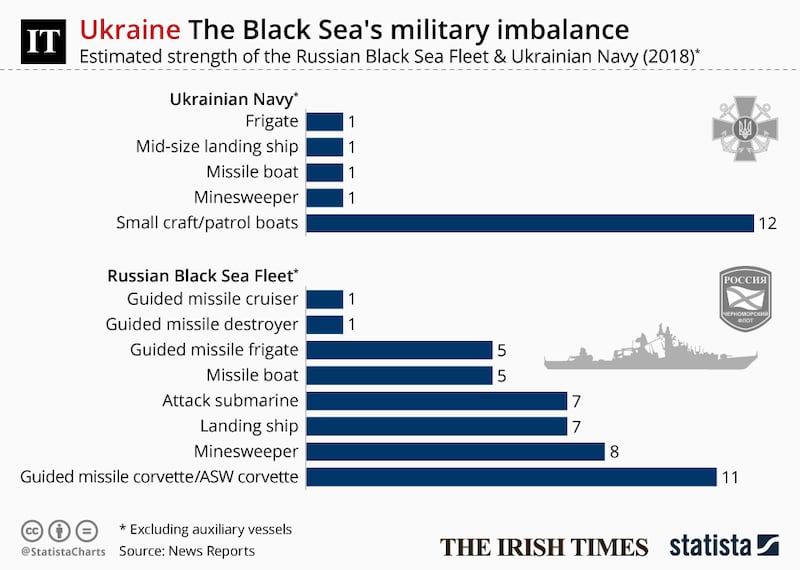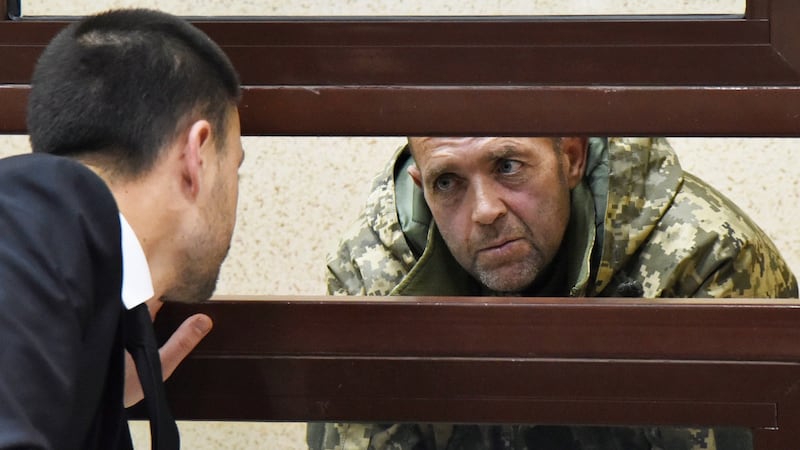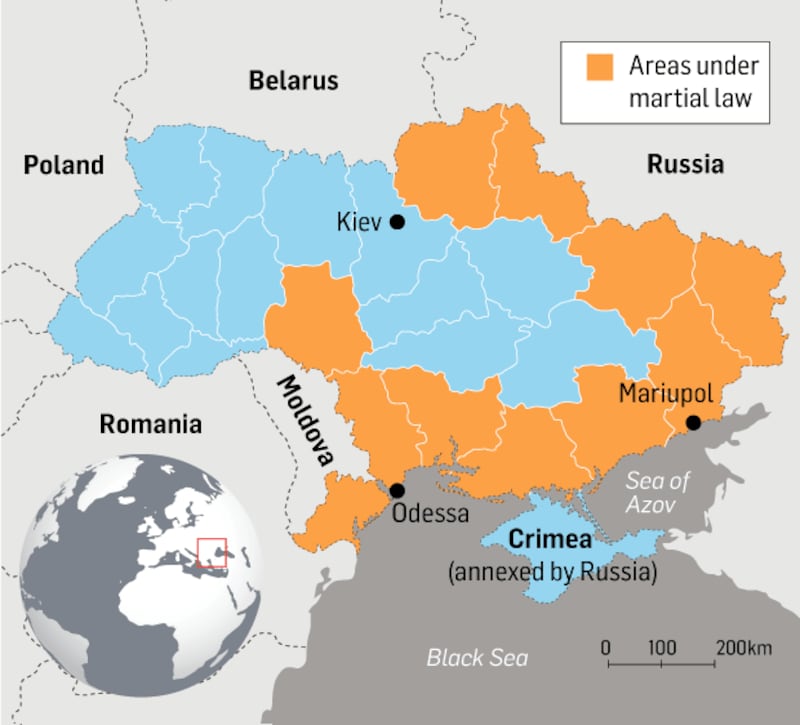What happened?
Last Sunday, two small Ukrainian artillery ships and a tugboat were prevented by Russian vessels from crossing the narrow Kerch Strait and reaching the Ukrainian port of Mariupol on the Sea of Azov, which both countries share.
After several hours of tense manoeuvring near the Crimean coast, a Russian vessel rammed the Ukrainian tug. The Ukrainian ships then turned back towards Odessa, but the Russian boats pursued them, fired upon and crippled two of the ships, before seizing all three vessels and 24 crew. Three Ukrainian crewmen were injured and all the sailors are now in Russian detention.

Who is to blame?
Ukraine accuses Russia of open aggression and released what it calls intercepted communications from the Russian ships' captains and military aircraft in the area that appear to support its case.
Moscow says the Ukrainian ships ignored the normal procedure for crossing the Kerch Strait and so were treated as hostile craft.
The Kremlin claims Ukrainian president Petro Poroshenko planned the "provocation" to boost his ratings before elections next March, but it has not adequately explained why Russian forces needed to chase, disable and impound the ships as they sailed away from the Kerch Strait.
What was the reaction?
US president Donald Trump surprisingly cancelled a planned meeting with Russian counterpart Vladimir Putin this weekend due to the crisis and German chancellor Angela Merkel placed "full blame" for the incident on the Kremlin.
Ukraine introduced martial law in 10 border and maritime regions to tighten security and help them prepare for what Poroshenko calls the heightened threat of full-scale war with Russia.
Western states urged Russia to release the ships and sailors but there is little European appetite for new sanctions or urgent deployment of Nato ships to the Sea of Azov, as Kiev has requested.
Russia insists it is in the right and has rejected calls for international mediation to defuse the crisis.
How did we get here?
After Ukraine's then Kremlin-backed president Viktor Yanukovich fled huge protests in February 2014 and went into exile in Russia, Moscow annexed Crimea and fomented a conflict in eastern Ukraine that has now killed more than 10,300 people and displaced 1.6 million.

Russian-led separatist forces are only about 25km from Mariupol, a port city of some 500,000 people, which is a crucial lifeline for the ailing economy of government-held territory in the region.
Mariupol sits on the Sea of Azov, a small, shallow body of water that is shared by Russia and Ukraine under a 2003 treaty. Its only outlet to the Black Sea is through the Kerch Strait, a 15km-wide channel that is spanned by a recently completed and highly controversial bridge linking Russia to annexed Crimea.
The bridge prevents many tall cargo ships from reaching Mariupol, and the port has been further affected by a sharp increase this year in the number of ships that Russian border guards are stopping and searching near the Kerch Strait, in what Kiev calls a campaign of harassment aimed at strangling the region’s economy.
Why now?
Russia says Ukraine’s ships provoked last Sunday’s clash, to give Poroshenko a pretext for declaring martial law in a bid to boost his popularity before presidential elections in March.
Kiev claims this is part of a broader Russian military build up near its land and sea borders that could be a forerunner to invasion and all-out war.
Analysts say Russia is very sensitive about security around its new bridge to Crimea, which is reportedly already having structural problems, and is alarmed by Ukraine's plans to build a naval base at Berdyansk on the Sea of Azov.
Russia also wants the world to treat its annexation of Crimea as a fait accompli, and may hope to achieve this by gradually tightening control of surrounding waters without triggering a major international response – much as it has done in Georgia since 2008, by incrementally expanding the territory of separatist-controlled South Ossetia.
What next?
Ukraine and its allies are urging Moscow release the three ships and 24 crewmen, who have been detained in custody on suspicion of illegally crossing the Russian border and transferred from Crimea to jails in Moscow.
Kiev and the West are also calling on Russia to end a de facto blockade of Ukrainian ports in the Sea of Azov, which this week prevented dozens of commercial ships from entering or leaving the area through the Kerch Strait.

Ukraine is continuing to tighten security under martial law, and announced plans to bar Russian men aged 16-60 from entering the country except under special circumstances. Martial law is due to end on December 26th, but Poroshenko could seek an extension if the perceived danger from Russia persists.
Merkel plans to hold talks with Putin at the G20 summit in Argentina, and has called for dialogue and ruled out any "military solution" to the crisis.
Berlin has rejected calls from Kiev, eastern EU states and Washington to scrap plans for the Nord Stream 2 pipeline, which would bring more Russian gas to Germany via the Baltic Sea and make it easier for Moscow to cut fuel supplies to Ukraine.










